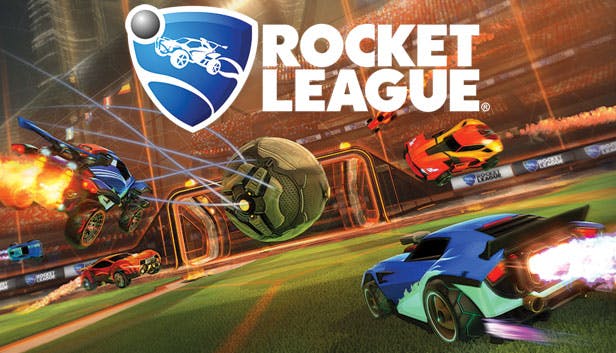This week my brother Matt (a sophomore here at Bowdoin) and I have had a lot of time (due to social isolation) to play some two player games. One of our favorites has been Rocket League, “a high-powered hybrid of arcade-style soccer and vehicular mayhem with easy-to-understand controls and fluid, physics-driven competition” (according to the game’s website). Rocket League places players in the driver seats of futuristic laser-propelled cars that can twist, turn, and even fly through the air of sleek stadiums. The game’s flashy visuals are full of sleek curves and vibrant neons. These visuals, combined with satisfyingly fluid and responsive controls, make for an incredibly fun and fast paced experience. 

This game certainly would not be the first thing to come to mind when thinking about sci-fi video games, but many of its elements do scream a certain futuristic element. The cars, ball, and stadiums all radiate with a future-tech glow. The cars can reach turbo-speeds when infused with boost scattered around the arena. The boosts can take many forms but some of the most classic forms are laser beams that jut out from the rear exhaust. Some boosts are  references to other SF titles, like the laser trails from Tron’s iconic laser bikes. The cosmetics for wheels, paints, and car toppers also often feature sleek glowing designs and reference SF titles like Rick and Morty, Beat Saber, Portal 1 & 2, Mad Max, Fallout, Dying Light, Oddworld, Warframe, Blacklight: Retribution, Back to the Future, etc. Even the cosmetics that aren’t references to specific SF titles still convey a strong SF vibe. For example, a wheel selection titled “Mothership” features rubber lined by a grid of glowing green streaks. Antenna toppers take forms like classic UFOs or the iconic green alien heads.
references to other SF titles, like the laser trails from Tron’s iconic laser bikes. The cosmetics for wheels, paints, and car toppers also often feature sleek glowing designs and reference SF titles like Rick and Morty, Beat Saber, Portal 1 & 2, Mad Max, Fallout, Dying Light, Oddworld, Warframe, Blacklight: Retribution, Back to the Future, etc. Even the cosmetics that aren’t references to specific SF titles still convey a strong SF vibe. For example, a wheel selection titled “Mothership” features rubber lined by a grid of glowing green streaks. Antenna toppers take forms like classic UFOs or the iconic green alien heads.


The arenas are often full of neons, sleek curves, and lasers and come alive with scored goals, which are often accompanied by futuristic laser-light-show explosions that reverberate through
the stadium.

Although it isn’t advertised as a SF game, Rocket League’s premise is based on future tech-infused vehicles competing in sleek, futuristic stadiums. Because much of the appeal of Rocket League seems to come from the fluid simple controls and the vibrant futuristic visuals, it shares similarities with many of the games that fall into the Flashy Flash category of our examination. At the same time, consistent updates have made Rocket League a much larger and more substantial game than many of the other Flashy Flash games. If you are looking for a fun game to play with friends at home or online, Rocket League has a lot of great content beautifully packaged in a sleek, neon, futuristic design.







 experience, I barely made it off my starting planet, which just happened to have an incredibly acidic atmosphere that would literally eat through the lining and life support of my space suit if exposed for too long. I discovered new animal species, plant types, and I explored some abandoned settlements that were nestled deep in underground tunnels (away from all the acid in the air at the surface). Once I got off planet, I aimed my ship at the next nearest planet and
experience, I barely made it off my starting planet, which just happened to have an incredibly acidic atmosphere that would literally eat through the lining and life support of my space suit if exposed for too long. I discovered new animal species, plant types, and I explored some abandoned settlements that were nestled deep in underground tunnels (away from all the acid in the air at the surface). Once I got off planet, I aimed my ship at the next nearest planet and





